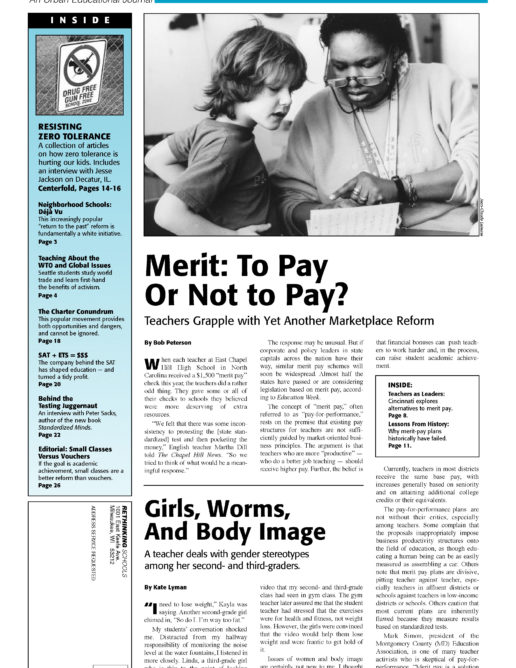Zero Tolerance Unfair to Blacks
In Denver, for example, Black students makeup 21% of the student population but account for 42% of suspensions and expulsions. In San Francisco, Blacks makeup 16% of the student population and account for 52% of suspensions and expulsions.
In each of the 10 cities for which data are available, Black students were suspended or expelled at a rate higher than their population in the school district and white students were expelled or suspended at a rate lower than their population. Other cities included Austin, TX; Boston; Chicago; Columbia, SC; Durham, NC; Los Angeles; Phoenix; and Providence, RI.
The report was released by the Applied Research Center (ARC) in Oakland, CA, in response to the expulsions in Decatur, IL. The expulsions gained national attention when the Rev. Jesse Jackson led a series of protests against what he termed unnecessarily vindictive policies of “zero tolerance.”
“Race does seem to be a significant dynamic” in school discipline, said Terry Keleher, of ARC. “And unless we acknowledge that dynamic, we may not make any progress in addressing this issue.”
The data, from 1997-98 or 1998-99, are part of an ARC study examining the racial disparity in school discipline. The study is one of the first to look at such statistics since the explosion in recent years of “zero tolerance” expulsion policies, precipitated in part by the 1994 federal Gun-Free Schools Act, requiring that students who bring weapons to school be expelled for at least a year. There has been no federal study on suspensions and expulsions since the act was passed.
ARC, an independent, nonprofit educational policy institute, will analyze disciplinary data from 20 cities in its full report, due out this March. The report, “Facing the Consequences: An Examination of Racial Discrimination in U.S. Public Schools, will be available at www.arc.org.
![]()
![]()

